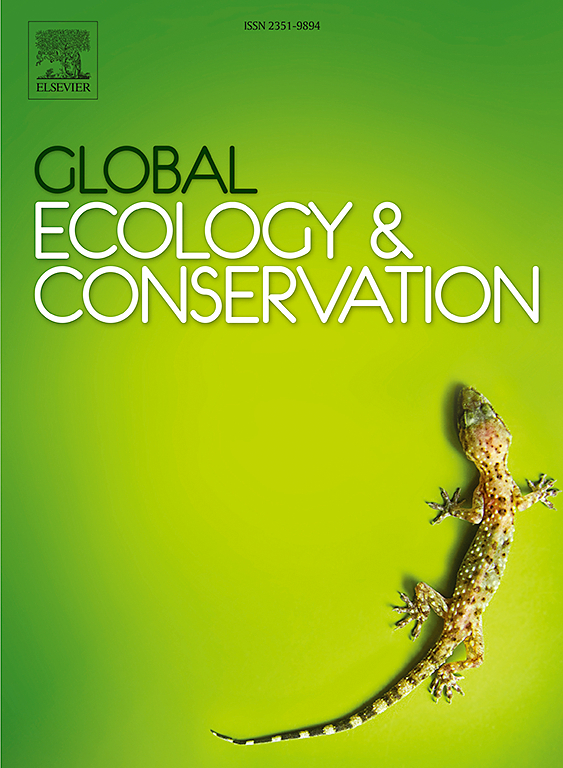季节、地形、生境质量和性别对马鹿性激素和应激激素的影响
IF 3.5
2区 环境科学与生态学
Q1 BIODIVERSITY CONSERVATION
引用次数: 0
摘要
压力和性激素对野生动物的生存起着至关重要的作用。了解这些激素水平如何受到环境和生物因素的影响对于有效的野生动物管理至关重要。本研究旨在探讨季节、地形、栖息地质量和性别对伊朗北部重要野生动物马鹿应激激素皮质醇、性激素睾酮和孕酮水平的影响。在2022年夏季和2023年冬季,从马鹿栖息地的夏季和冬季范围收集了80份粪便样本。皮质醇、睾酮和孕酮的水平在实验室使用酶免疫测定试剂盒和ELISA设备进行测定。生境参数中选择植被总百分比,地形参数中选择海拔高度。确定了这些因素以及性别和季节(冬季和夏季)对压力和性激素的影响。结果表明,季节对皮质醇、睾酮和黄体酮水平有显著影响,与冬季相比,马鹿在夏季承受更大的压力,睾酮和黄体酮水平也更高。总植被百分比和海拔对这些激素的影响不显著。马鹿皮质醇与睾酮、黄体酮无显著相关性。这些发现可以通过考虑马鹿和世界各地其他鹿物种的压力和性激素的季节性变化来为保护和管理计划提供信息。本文章由计算机程序翻译,如有差异,请以英文原文为准。
The effect of season, topography, habitat quality, and gender on sexual and stress hormones in red deer (Cervus elaphus maral)
Stress and sexual hormones play a crucial role in the survival of wildlife. Understanding how these hormone levels are influenced by environmental and biological factors is essential for effective wildlife management. This study aims to investigate the impact of season, topography, habitat quality, and gender on the levels of the stress hormone cortisol and the sexual hormones testosterone and progesterone in the red deer (Cervus elaphus maral), a key wildlife species in northern Iran. In summer 2022 and winter 2023, 80 fecal samples were collected from the summer and winter ranges of red deer habitats. The levels of cortisol, testosterone, and progesterone were measured in the laboratory using enzyme immunoassay with specific kits and an ELISA device. Among habitat parameters, total percentage of vegetation was selected, and among topographic parameters, elevation was chosen. The influence of these factors, along with gender and season (winter and summer), on stress and sexual hormones was determined. The results showed that season significantly affected cortisol, testosterone, and progesterone levels, with red deer experiencing greater stress and higher testosterone and progesterone levels in summer compared to winter. Total percentage of vegetation and elevation did not have significant effects on these hormones. There was no significant correlation between cortisol and testosterone or progesterone in red deer. These findings can inform conservation and management plans by considering seasonal variations in stress and sexual hormones for red deer and other deer species worldwide.
求助全文
通过发布文献求助,成功后即可免费获取论文全文。
去求助
来源期刊

Global Ecology and Conservation
Agricultural and Biological Sciences-Ecology, Evolution, Behavior and Systematics
CiteScore
8.10
自引率
5.00%
发文量
346
审稿时长
83 days
期刊介绍:
Global Ecology and Conservation is a peer-reviewed, open-access journal covering all sub-disciplines of ecological and conservation science: from theory to practice, from molecules to ecosystems, from regional to global. The fields covered include: organismal, population, community, and ecosystem ecology; physiological, evolutionary, and behavioral ecology; and conservation science.
 求助内容:
求助内容: 应助结果提醒方式:
应助结果提醒方式:


